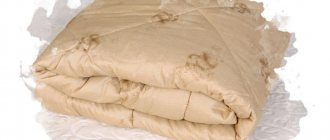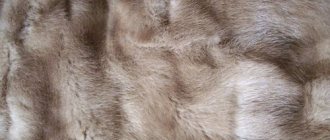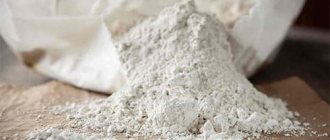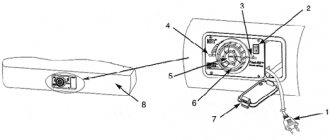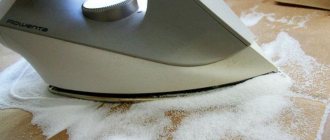- A brief excursion into biology
- Stages of development
- Features of green flies
- Harm and benefits of green flies
- Fighting blowflies Ways flies get into human housing
- Preventative measures against green flies
- Ways to combat carrions
Green flies are associated with carrion, which is justified. These insects with shiny bodies fly away as soon as a food object appears nearby. Larvae hatching from eggs speed up decomposition. They love street markets for meat, fish, sweets or other food products.
Large green flies are found on damaged fruits and berries in orchards and vineyards. There are especially many of them where there is excrement or meat (cesspools, slaughterhouses).
A brief excursion into biology
Carrion flies are insects with a green body (with a metallic or golden tint). The size of carrions is up to 1 cm. The antennae are strewn with bristles. They are found everywhere, both on the street and in houses. Green flies carry microbes and parasite eggs.
There are more than 1,500 species comprising various carrion or blowflies. All of them have a brightly colored body, with a metallic tint, green or blue. Green blowflies belong to the genus Lucilia.
For nutrition, they use liquefied material of rotting organic matter (pus, decomposing proteins), which are liquefied under the influence of enzymes secreted by the maggots themselves.
Homemade traps
There is no need to buy stun guns or Velcro. They are easy to make with your own hands. Options for how to get rid of flies in the yard and at home:
- Bottle and syrup. Take a container (plastic, glass). Pour in sweetened water, beer or sugar syrup. Add honey, milk (a few drops). Stick a homemade paper cone into the neck of the container, but make sure it does not come into contact with the liquid. Place bait in the habitats of the winged creatures. They will climb into the container without the right to crawl back out of the sticky liquid.
- Chlorophos is a radical, effective method of repelling flies and eliminating them for a long time. 1/3 tsp. Combine chlorophos with sugar (0.5 tsp), pour into plates.
- Sugar syrup + black pepper. Stir. Pour onto a plate. Keep it on the table as bait for several days.
- Vinegar and detergent. Pour dish soap and vinegar (4-5 drops) into a jar, cover with cellophane with a hole at the top. Flies will fly inside and die from the vinegar. Instead, you can use boric acid (1 tbsp) by diluting it with water (1 l). Treat surfaces not in contact with food.
- Cellophane bag + banana skins. Leave it open overnight. In the morning, deal with the accumulated midges. Throw it away.
How to get rid of flies in the barn, in the yard, in the country. No less effective methods are trap tapes as impregnation compositions:
- Rosin + sunflower oil. Process the rope or cardboard strip. Hang it where midges hover.
- Hot pepper. Combine with sugar (40g), 0.5 glass of milk. Dampen strips of parchment paper. Hang it around your house or apartment.
- Apple cider vinegar is suitable for creating traps that attract rather than repel. Pour into container. Flies will flock to the alluring smell.
- Sugar syrup + jam. Lubricate the cardboard strips first with glue to accelerate the adhesion of midges, then with a sweet composition.
Attention! Some smells cause severe allergies. Before use, people with individual intolerance should first test the above-described products.
Stages of development
The green fly goes through the following stages in its development:
- Egg – 8-25 hours.
- Larva (maggot) – 10±3 days.
- Pupa 3-4 days.
- Adult – 45 days.
Carrion birds quickly find open wounds, dead birds, animals and lay eggs there on the very first day. But they can also be deposited in the damp soil of flowerpots, on rotten fruits and vegetables. The eggs look like white sticks 1 mm long. Development time depends on temperature and humidity.
After a day, small larvae (a little more than 1 mm) appear from them. They develop on a favorable basis - kitchen waste, feces, animal corpses. They have 1 mouth opening plus 2 respiratory openings. There is a black hook in the mouth with which they move.
The larvae constantly secrete juice through this hook, as if from a syringe, under pressure. Under the influence of fermented juice, the tissues quickly dissolve, forming a corpse broth on which the insect feeds. The larvae grow quickly, become thicker, larger, moving to pupation after 7-14 days, choosing warm, dry places.
The pupal stage (puparia) lasts 3 days. After hatching, the adults are ready to reproduce. Each female is capable of laying 100-150 pieces per day, repeating the process every 2 days. During its short life, 1 individual is capable of reproducing up to 700 eggs (6-8 clutches).
Some types of carrion flies can lay up to 2000 pieces in 1.5 months. During one warm period, several generations appear. In warm, indoor areas, insects can breed year-round. They overwinter in any phase except eggs.
Animal handling
To enhance the effect of disinfestation on farms and households, a procedure is periodically applied to the inhabitants of these premises with fly-repellent substances. The procedure is carried out outdoors, and the drugs used do not harm the health of humans and animals. The following medications have proven themselves to be effective:
- Biofly Pur is an effective fly repellent for cows and calves weighing more than 0.1 tons. The active component is cyfluthrin. Cow insecticide is applied along the animal's spine and remains effective for 30 days. Flies die after contact with the fur of an artiodactyl. Domestic chicken, as well as other birds and livestock, can be treated with this safe drug from Bayer. The price of a 500 ml bottle is around 1,700 rubles.
- Neostomozan - used for disinfestation of premises and their inhabitants. The solution is prepared using water in accordance with the instructions. For application, use a spray bottle or brush. The cost of the drug is approximately 3 thousand rubles.
Before purchasing any insecticide, you should consult your veterinarian.
Features of green flies
Insects become active after the temperature rises above +15°C. They carry out activities only during daylight hours or in a lighted room.
Carrion bugs easily move on any surface (horizontal, vertical), which makes them pervasive.
Green flies smell waste, especially meat and fish, from a great distance. It is enough to hang the cleaned fish carcass out to dry, and in half an hour there will be white masonry on it.
In search of suitable material for eggs, the female can fly up to 20 km.
Flies are unable to fly out of the room on their own due to their inability to see transparent barriers. Therefore, scavengers often unsuccessfully fight against windows.
Reproduction
The green fly lays about 150 eggs at a time, but in a day their number can reach five hundred. To protect the offspring from bright sunlight, to which they are very sensitive, the female looks for deep folds or holes in the flesh of the carrion, and, if possible, climbs under the corpse to lay eggs.
The insect is not at all concerned about other scavengers, such as ants, which carry freshly laid fly eggs. Her offspring are so numerous that such petty theft will not affect the general population.
Harm and benefits of green flies
The main danger of blowflies is that they spread many diseases on their bodies, including cholera, dysentery, intestinal myiasis and typhoid fever. And given their fantastic reproduction speed, flight speed and penetration into all cracks, such a danger is very likely.
Flies also spoil a huge amount of food products, causing huge losses to food industry enterprises and livestock farming (they lay eggs in the nose, eyes, genitals, wounds, and transfer various pathogens and parasites from sick animals to healthy ones).
There are also benefits from carrion. By knowing the timing of blowfly development at all stages, forensic scientists can determine the time of death to the day, even if the body has been adversely affected. Insects were first used in search of killers back in the 13th century.
During the war, 100 years ago, maggots were used for field cleaning of wounds from dead flesh. Having learned that the juice of the larvae dissolves only areas that die and does not touch the living ones, they began to use them to remove necrotic layers.
First, they filled the wounds with maggots, and after a certain time they removed the cleaners, carefully cleaned the surface of the wound and obtained clean, living and sterile flesh. For medical purposes, special larvae were used, the cleanliness and sterility of which were monitored so as not to further infect the wounded.
Even now, options for using carcasses to treat tissue necrosis are periodically being developed, since dead tissue cannot be removed surgically so thinly, nanometers in size.
Repellent scents
Winged birds cannot tolerate strong odors. Although the sense of smell is developed. The following spray compositions will help eliminate the problem: how to get rid of flies using folk remedies:
- Vodka. Pour into a spray bottle. Spray the area, leaving the window transom slightly open. Wait until the flies leave their habitations.
- Essential oils (citrus fruits, eucalyptus, peppermint) with a repellent smell can help you get rid of flies under the floor. Pour into an aroma lamp to fumigate the room or lubricate the accumulation areas. The dissipating aroma will drive uninvited guests out of the apartment.
- Flower sachet. Place several bags of aromatic herbs (eucalyptus leaves, cloves, clover, geranium) around the room. Cloves have a very strong smell; just leave them on the table, pour them into a saucer, or stick the buds into half a lemon to enhance the effect. Plant geraniums and tomato seedlings in boxes. Install on the windowsill.
- Onion. Treat windows and doors with juice.
- Turpentine with kerosene. Dilute with water. Treat areas where flies accumulate. Adding components in small doses will not be dangerous for people.
- Bay leaf. Place it where the winged ones fly most often.
- Vinegar. How you can get rid of flies with its help - moisten a rag, treat areas of accumulation, wipe jambs, door openings.
The above methods help you understand what smell flies don’t like at home. If it is impossible to open windows in winter, a Venus flytrap is a good choice for expelling pests. The peculiarity is the capture of buzzing leaves with subsequent processing.
Wormwood, tansy, geranium, lavender - know which herbs additionally repel flies.
Interesting articles:
How to prove that the earth is round?
How to make curls without a curling iron or curlers?
How to stop drinking alcohol
Fighting blowflies
To prevent the appearance of this pest in the house, you should know its habits, methods of entry, and carry out preventive measures along with control measures.
Ways of flies getting into human habitation
Green flies penetrate houses and apartments:
- through all sorts of cracks - green carrion birds fly very quickly, penetrate into the tiniest cracks;
- with vegetables, fruits, or wildflowers on which eggs are laid - when a suitable object for feeding appears, blowflies multiply at a fantastic rate.
These insects actively develop only when the weather is warm, but if the apartment is warm, then they feel great in winter. Even a single individual is dangerous, since it can lay eggs, and after that the attack on the house will begin in geometric progression.
Preventative measures against green flies
Eliminate or seal all kinds of nurseries: trash bins, manure pits, compost heaps or toilets.
Immediately destroy the carcasses of dead animals and birds.
Do not leave fresh meat or fish in a warm, open place; store food in airtight containers.
Treat insect locations.
Maintain cleanliness, quickly remove dirt, carry out wet cleaning, wipe off excess moisture, regularly ventilate the room, especially in the cool time of the day/year.
Cover windows and doors with mosquito nets.
Ways to combat carrions
Used against green flies:
- adhesive tapes - effective, safe for humans or animals, but do not guarantee complete destruction, last a long time, have a small radius of influence;
- insect repellent aerosols - effective, instant but short-term effect, cannot be used near food or where there are animals or people;
- powdered insecticides - act slowly, have a long-lasting effect, cannot be used where there are people, animals, or food;
- poisons for treating manure and garbage heaps - treatment weekly.
For larvae and pupae, larvicides are used:
- neoprene, baygon,
- creolin, naphthalizol,
- trolene, cyodrine,
- karbafos, metathion, others.
For adult insects - with external insecticides:
- dilox,
- permethrin,
- qigong and others.
Mechanical and electrical traps, as well as energized nets and gratings, are effective.
It is important to use an integrated approach, combining prevention and treatment not only indoors, but also the surrounding area (cleaning plus garbage removal, sealing cracks, and other activities).
Methods of disposal
Since dipterans have been living near us for a very long time, over many centuries of proximity, many ways have been invented to remove them. These include both traditional folk recipes and modern developments.
Physical destruction
The simplest thing is to kill all the insects using a fly swatter or folded newspaper. There are several obvious disadvantages:
- effective only against a small number of flying parasites;
- you will have to work hard to catch up with the fly, wait until it lands on the wall or furniture, and only then swat it;
- only adult individuals are destroyed, and a large number of new ones will soon appear from the laid eggs;
- there is a risk of ruining the interior: a smeared bloody trail is a dubious decoration.
Today there are more advanced tools for fighting that do not require your participation and are absolutely harmless.
Important! Here you can find information about devices that do not use toxic chemicals. They are safe for allergy sufferers and small children.
You can realize the hunter's instinct without spoiling the finish using an electric fly swatter. You need to track a fly in the same way as with a regular one, but you don’t have to wait until it lands: when the insect touches the surface, it gets shocked and falls dead.
Ultraviolet lamps are installed on a table or hung on a wall. They attract pests with ultraviolet radiation, and when they get closer, they destroy them with a discharge of current.
Here's another interesting option: plant a houseplant like a Venus flytrap. This is a predatory flower that attracts insects and eats them. Not only does it bring tangible benefits, but you can also brag to your friends.
One of the methods my grandmother used was expulsion. Suitable for situations where there is a lot of clattering noises, but there is no possibility of poisoning. The windows in the room are tightly curtained to create pitch darkness, while the door or one window is left open and light enters through it. You need to take a medium-sized piece of fabric (a folded sheet or towel) in your hands, and actively fan the room to drive flies away from their homes. They see the light and actively fly towards it, getting rid of their annoying presence.
Traps
Their essence is simple: to attract house flies to your contents and prevent them from getting out of the trap.
The most famous trap is a sticky tape in the form of a spiral; such traps are sold everywhere. The special impregnation attracts uninvited guests, and they flock to its aroma.
The tape needs to be secured where the greatest concentration of buzzing creatures is observed, and replaced with a new one as necessary.
Cheap and effective, but the interior value of such “decoration” is highly questionable.
You can make similar Velcro with your own hands. For production you will need:
- 100 grams of castor or sunflower oil;
- 200 grams of rosin;
- 1 tbsp. l. honey or jam.
Wrapping or landscape paper is suitable as a base. It must be cut into strips 4-5 cm wide and approximately 50 cm long. Attach a loop to one of the sides so that the bait can be hung conveniently, and to the bottom part - a clothespin or several paper clips so that the paper does not curl.
Melt the rosin in a water bath. When the substance begins to boil, pour oil into it and stir until smooth, without removing from heat. Then add honey or jam.
While still hot, apply the mixture onto the strips, the layer should not be thicker than 2-3 mm. All that remains is to place the blanks in places where flies are most concentrated.
There is an option to make a trap that will also help get rid of midges. To do this, cut the bottle in half and insert it with the neck inside. Pour some beer or water with a couple of spoons of sugar or honey into the bottom. Diptera will flock to the treat and climb inside, but they won’t be able to get out.
Now about ultra-modern integrated solutions. At the dacha and in a private house where there is a livestock farmstead, you can install a street trap in the yard. The range of action of such a device is about 4,000 m, and it is quite capable of reducing the number of pests flying in your area.
The installation produces carbon dioxide and heat, thereby attracting insects. When a fly flies to the source, it is sucked inside, where it dies within 24 hours.
It is allowed to place a device in the form of a lamp with sticky paper behind the grille. The clattering sound flies up to the light and sticks.
Repellers
Efficiency is based on the use of everything that flying creatures are afraid of. These means make it so that they independently leave the home, considering it unattractive. For this purpose, natural and artificial substances that smell unpleasant are used. Some plants and herbs can provide good service.
- Tomato tops that need to be laid out on the windowsill. It’s even better to plant a couple of tomatoes of a variety intended for the balcony.
- Geranium also fights moths, so a pot with this flower will definitely not be superfluous.
- Basil planted under windows or in flowerpots.
- Marigolds in a flowerbed also protect against uninvited guests.
- Hang bunches of bay leaves in your room.
- It would also be a good idea to plant bird cherry trees on the plot, and place its crushed leaves in the corners that the creatures love.
- Fresh or dried mint will also come in handy in a house filled with buzzing creatures.
- Bunches of dried tansy and wormwood will not be tolerated by other parasites, such as moths and ticks.
As an alternative to dried and fresh plants, it is permissible to use essential oils of lemongrass, peppermint, eucalyptus, cloves, and lavender. Mix water and a dozen drops of oil and spray the solution. The aroma will be a pleasant bonus. You can also light an aroma lamp with one of the above oils.
Another option: place clove buds everywhere. An even more effective homemade repeller can be obtained by sticking several buds into a lemon. Or use the method from the video:
Hazel lotion removes illegal neighbors from your apartments and protects them from them in the open air. Prepare a hazel decoction in advance; you will need about 100–150 g. Add table or apple cider vinegar to it in the same volume and 40–50 drops of eucalyptus essential oil. Pour the lotion into saucers and place. If you apply this mixture to exposed areas of your body, flies are guaranteed to fly around you.
Some people recommend cleaning the floor by adding kerosene to the water. But in such a home it will be uncomfortable not only for dipterans, but also for people, so try other methods first.
Sprinkling vodka in the room helps, the pungent alcoholic aroma of which is very disliked by parasites. Soon after processing, they leave the home in search of a new shelter.
Ultrasonic repellers are also used successfully. They emit sound on a wavelength inaudible to humans, but insects really don’t like this repertoire.
However, it is worth considering that the device has a delayed effect, i.e. the effect appears only 2 – 4 weeks after the start of use. The advantage is that the device usually works against mosquitoes, midges or cockroaches.
Toxic substances
When choosing what to poison pests with, there are two ways: folk recipes or purchased products. Of course, specialized insecticides are more effective and they work for sure, while homemade poisons may not help.
In very difficult cases, for example, in a wooden structure where there are many cracks with egg laying, all methods give only a temporary effect. It is advisable not to be brave, but to call the disinfection service. For a fee, they are guaranteed to get rid of your problem.
Folk recipes
There are situations when it is impossible to use chemicals for health reasons or the necessary product is simply not at hand. Then the use of poisons prepared at home is completely justified.
- You should combine 1 tbsp. l. formalin, 5 tbsp. l. sweetened water and 3 tbsp. l. milk. Pour this mixture into saucers and place at several points.
- Another “treat” consists of jam and ground black pepper. Also place baits and watch how in a couple of days the dipterans begin to die.
- Mix water with saccharin and 1 tsp. honey Soak a napkin in the mixture and place it in a visible place.
- Make a decoction of toadflax (sold at the pharmacy) and milk. Pour this delicacy into small plates and place it in your home.
Specialty chemistry
When you want to get results quickly and with less effort, it makes sense to use special means.
Sprays
They are very popular in our country, probably everyone has used them at least once.
When choosing a spray, pay attention to the active ingredient. The repellent should not contain fluorine and chlorine, as they are harmful to humans. Permethrin, cyfluthrin, cypermethrin and the like, the names of which end in “-trin,” are considered safe.
These products include: “Dichlorvos”, Raid, Dr. Klaus, “Raptor”, Combat.
But in any case, it is necessary to take precautions: wear a mask to prevent the aerosol from entering the respiratory tract and mucous membranes, expel everyone, remove edibles and wash after surface treatment.
In addition, it is very important to follow the instructions and recommendations regarding how much aerosol from a can you need to spray onto the volume of the room.
Fumigator
A small device into which a plate or bottle of liquid is inserted. Works from a socket. Thanks to the heating, the poisonous components evaporate and spread throughout the room, having a paralytic effect on the nervous system of the buzzing creatures. At the same time, the poison does not smell at all.
For people, the concentration of vapors is low, but still you should not install the fumigator closer than 1 m from the place where a person is constantly located. And do not forget to ventilate the room after the parasites are destroyed.
Fumigators are produced under the trademarks Picnic, Raptor, Argus, Raid. For families with children, it is better to use specialized options produced by Baby Data and Komaroff.
Chalk
They need to draw lines in areas where pests are most concentrated. The active component contained paralyzes the nervous system, which leads to their death. This happens after about 3-4 days, but strong individuals can last a week. So don't expect immediate work.
The use of this form of insecticide may be unsafe in families with small children or pets.
You can crush the pencil into powder and mix it with water. This composition is used to treat vertical and horizontal surfaces.
The most famous chalk in this group is “Mashenka”, but there are others, for example “Clean House”, “Brownie Proshka”, Crush, “Absolute”.
Powders, granules, suspensions
Typically, such products are produced in the form of powder or granules, which are diluted in water to the required concentration, or are sold ready-made. The surfaces should be treated with the resulting solution and wait for the result.
As an example, we can cite the chemicals “Agita 10 wg”, “Minap 22”, “Executioner”, “Master”.
However, their safety is still in doubt, so it is better to treat with such means in non-residential premises, in the attic, in an outdoor toilet and garage.
Owners of their own farmsteads and summer cottages are recommended to disinfect the surrounding area. This way the number of flies per season will decrease significantly. The drugs usually have a complex effect, that is, they are also harmful to mosquitoes, cockroaches, ants, ticks and other creatures. Use compounds like “Karakurt”, Rubit, “Mukhoyar”.
Bee owners should not do this type of spraying: the poison also destroys honey plants.
Folk remedies for control and prevention
Plantings of various repellent plants allow you to create an invisible fence around the site. Such biological “weapons” include elderberry, bird cherry, walnut and wormwood.
It is better to plant geraniums inside the house. And an inconspicuous, harmless spider deftly clears the house of annoying winged guests.
Using essential oils of mint, lavender, pine or basil can repel most types of flies.
With minimal knowledge and understanding of what the green fly prefers, how it develops, and where its weak points are, you can get rid of the meat carrion once and for all.
How do larvae eat?
The larva cannot yet bite off pieces of solid food. How does she eat? During the research, an experiment was carried out: pieces of slightly dried meat were placed in two flasks, and green fly larvae were planted on one of them. After a few days, the piece of meat on which the larvae lived became so soft that it resembled more of a liquid pulp. At the same time, the piece of meat in the second flask did not change at all. That is, the larvae, secreting a special secretion from their mouths, liquefy solid food, turning it into a kind of broth, and then feed on this broth.
It turns out that they digest food before eating it. In addition, the hook-shaped projections on the head of the larva are also involved in the process of such digestion. As the larva digs its hooks into the flesh, it secretes digestive juices. It is absorbed into the meat in the places where the hooks were attached.
Having reached a certain age, the larva burrows into the ground, where it pupates. After a while, the cocoon lid bursts, and a young green fly appears from under the ground. After drying the wings a little in the sun, she rushes off in search of rotting flesh.

